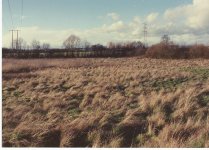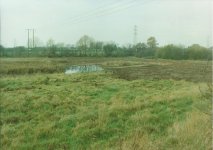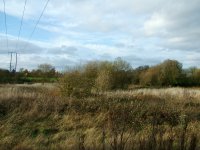Tomorrow we will working at the North Moors area. This area is the smallest of the three distinct sections of the reserve. But it has received more attention than anywhere else, I will be writing more on this subject at a later date. So for now I will mention tomorrow's work: This will be concentrated on the north section of the main reed bed. Here in 1990 a new pool was dug out: I have attached my notes written on this subject below
Dr Rowe’s Pool
The north end of the main pool was extended in 1990 when Dr Rowe stumped up the money to employ a contractor to carry out the work. This area was previously just rank vegetation, featureless and almost birdless.
A deep, oval ditch was dug around the periphery; this encircled the central area forming a moat around an ‘island’. In time the island became overgrown with willows as did the edge of the new pool, this shaded the reeds and inhibited its growth. To counteract this and maximise the area with ‘quality’ reeds, we decided to coppice the willows on a rotational basis. Most if not all the island willows will be treated and discouraged from growing. The mainland willows will be coppiced every two years or so, however they should not be allowed to ‘encircle’ the island. Therefore, it would be preferable to allow the coppiced trees to grow only on the north west side (this will minimise the sunlight lost during the spring and summer), those elsewhere on the periphery should be treated and discouraged from growing. The main aim of the management should be to create a viable area of reeds and maintain its ‘openness’ to provide nesting sites for reed warblers and water rail and hopefully attract wintering bitterns. The island once cleared of trees would support breeding waterfowl and passerines.
During 2011, two willow viewing screens were constructed in the north east and north west corners of the pool. These in association with the nearby dead hedging approach path, will allow an intimate interaction with the area. Monitoring of the area will give us information on how the habitat develops and what species are utilising it. After care ( possibly an annual basis)could include, fine tweaking of the ‘moat banks’ by creating ‘open’ muddy, shallow pools.
I have attached 3 photos of the area, as viewed from the west side by the bench.
1. In 1988
2. Just after completion
3. as Nov 2011 note how the island has overgrown with willows.
Tomorrow we will remove the trees from the island and use the brash to create more 'dead hedging'
B

John







